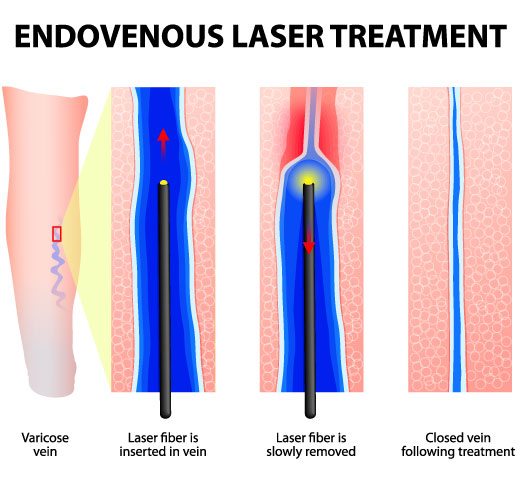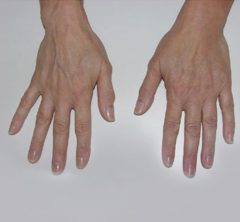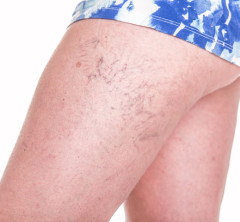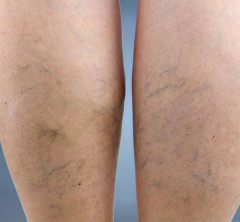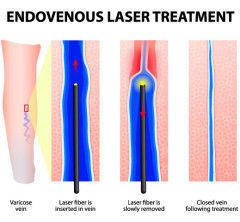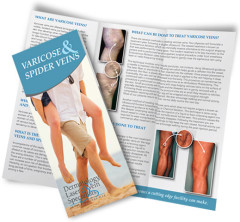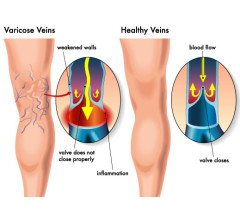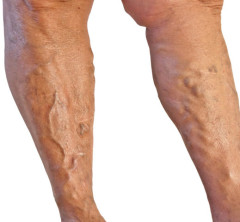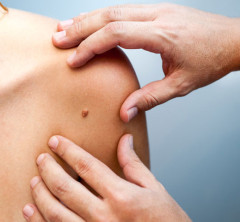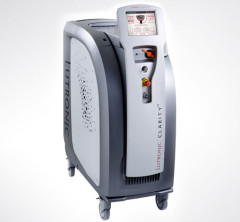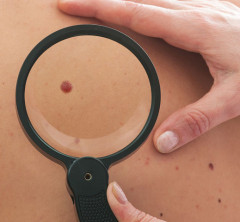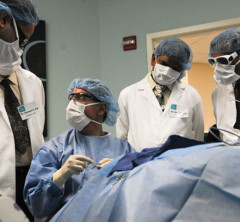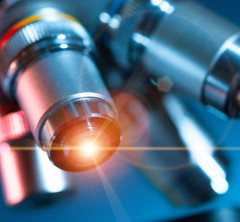Varicose Vein Treatment Options
Endovenous Laser Ablation
Endovenous Laser Ablation Therapy (EVLT) is a laser procedure used for treating insufficiencies in the venous system, which is the primary cause of unsightly, uncomfortable or symptomatic varicose veins. Instead of removing the diseased vein (e.g.- “vein stripping”), EVLT leaves the vein intact while permanently sealing it off from within.
Benefits of EVLT:
- Simple, rapid relief of symptoms | 98%-100% success rate
- Local anesthetic, no general anesthesia
- Safe, sterile & minimally-invasive in-office procedure
- Fast recovery with little to no pain during recovery
- Normal activities can be resumed quickly
- Patients enjoy both medical & cosmetic improvements
FAQs
What happens during laser varicose vein treatment?
Before the procedure begins, your leg will be cleansed, prepped and marked. Next, we’ll use tumescent (a local anesthetic solution) to numb all along & around the varicose vein that we’re treating. Using tumescent numbing not only makes the procedure more comfortable for you, it also protects the tissue surrounding the vein during treatment. After numbing, we’ll use ultrasound as a guide for creating a small entry point (think of this as a tiny tunnel) directly into the vein, which provides access for the laser fiber. Then the laser fiber is guided along the vein, again using ultrasound, until it is positioned just below the junction where the blood flow problems are originating. The laser is then activated and slowly pulled back out, delivering thermal energy along the length of the vein. As a result, the walls of the vein contract and close, causing the blood to be re-routed to other healthy veins in your leg.
What are the possible side effects from EVLT?
Possible side effects or complications include discomfort, bruising, inflammation, and/or temporary numbness. The development of more serious complications, such as infection, bleeding, nerve damage and/or blood clots, are extremely rare with this procedure.
What should I expect after endovenous laser ablation treatment?
Immediately after your procedure, we’ll encourage you to get up and walk if possible. We’ll also give you post-treatment instructions which will reduce your downtime and your risk of complications. You will have to avoid heavy lifting, strenuous exercise and long periods of sitting/standing in the weeks following treatment. Compression hose are also an important part of recovery and your compliance with wearing them is critical to the outcome! Generally speaking, the healing process is well-tolerated and most patients are able to return to their normal daily activities shortly after having this procedure.
How much does EVLT cost?
Fortunately, endovenous laser ablation is covered by the majority of health insurance plans. Our vein team staff will help you through insurance verification for the procedure and we’re prepared to answer your questions about the process. Of course, there are hundreds of insurance companies and plans and they all have differences in coverage – and in some cases they may not cover EVLT. Should this be the case, we’ll be glad to discuss alternative payment options for your procedure.
VenaSeal™
This procedure is not covered by insurance. You will be given a price quote at the time of your financial consultation.
- The VenaSeal™ closure system is the only procedure that uses a patented medical adhesive delivered endovenously (directly into the vein) to achieve closure of the vein.
- Guided by ultrasound, the physician inserts a catheter into the diseased area of the vein. Once in place, the physician administers the VenaSeal™ adhesive through the catheter at various points in a segmental fashion – using only manual compression to press the vein closed along the way.
- Once the treatment is complete, blood trying to travel through this vein is then re-routed through other healthy veins in the leg.
- Possible side effects or complications include minimal discomfort, bruising and/or mild inflammation. The development of more serious complications, such as infection, bleeding and/or blood clots, is extremely rare with this procedure.
Benefits of VenaSeal™:
- VenaSeal™ is administered without the use of tumescent anesthesia, making it an excellent option for patients who are hesitant or squeamish about needles.
- In the VenaSeal™ U.S. Clinical Trial, patients reported little to no pain or bruising post procedure. One-year results of the study continue to demonstrate safety and efficacy of the procedure, with closure rates of 97.2 percent.
- Patients enjoy both medical & cosmetic improvements; having reported virtually no downtime and little to no discomfort, meaning they can return to their normal activities immediately after the treatment.
Phlebectomy
- Ambulatory phlebectomy is a minimally invasive, outpatient procedure developed by dermatologic surgeons that removes superficial veins through small, slit-like incisions in the skin. Prior to the procedure, local anesthesia is used to numb the treatment area before the physician makes a very small incision. The bulging vein is then extracted through the incision, resulting in immediate improvement in appearance.
- In order to speed up healing time, we will advise you to walk around and refrain from sitting or standing for long periods of time for a few weeks after the procedure. Patients are usually able to go about their normal daily activities shortly after having this procedure.
- Possible side effects or complications include temporary discomfort, bruising, inflammation, skin numbness and allergic reactionto local anesthesia. All of these potential side effects are treatable.
Ultrasound-Guided Sclerotherapy
- Ultrasound-guided sclerotherapy is used for the treatment of deeper diseased accessory vein branches that cannot be seen or felt.
- Using ultrasound, a solution is injected into the veins causing the vein walls to collapse. Therefore, USGS requires expert knowledge that conventional sclerotherapy does not.
- As the larger veins are treated, smaller spider and reticular veins will often disappear as a result.
- Possible side effects or complications include brown discoloration of the vein that may take up one year to disappear and usually requires repeated treatments. In very rare cases, skin ulcers may form in the treatment area. Also rare, but a possibility with any medication, allergic reactions can occur. All of these potential side effects are treatable.
Varithena®
- Varithena® (polidocanol injectable foam) is a prescription medicine used to treat varicose veins caused by problems with the great saphenous vein (GSV) and other related veins in the leg’s GSV system. Varithena® improves symptoms related to or caused by varicose veins, and the appearance of varicose veins.
- Varithena® is minimally invasive, nonsurgical and takes less than an hour to complete.
- The doctor administers a small amount of Varithena® through a catheter or by direct injection into the malfunctioning vessels.
